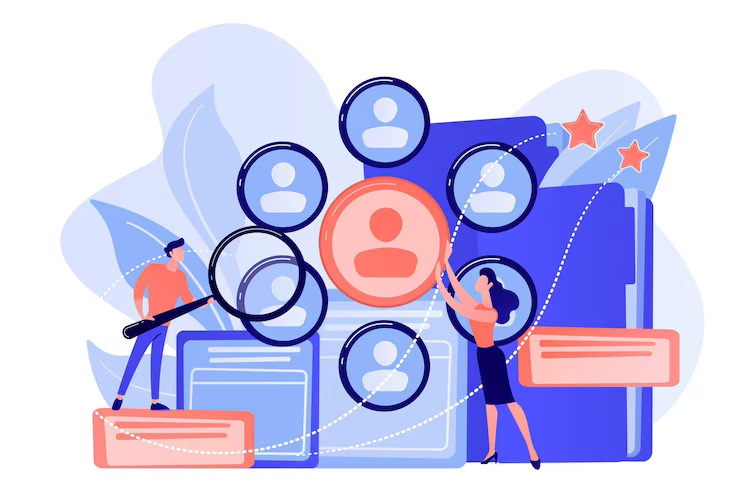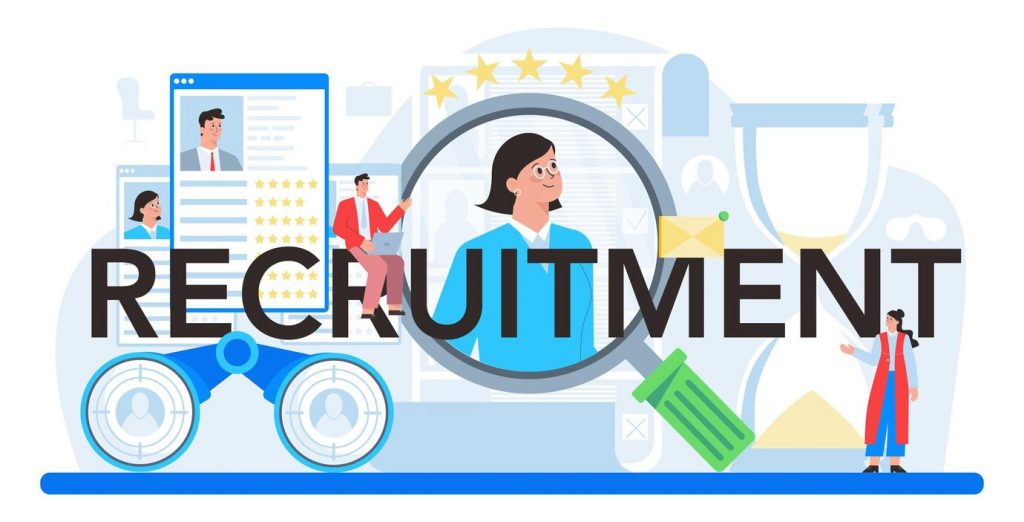Hiring is no longer about intuition—it’s about precision. In a market where every hire can significantly influence a company’s trajectory, especially in high-growth industries, organizations are replacing vague job descriptions with clearly defined Candidate Success Profiles (CSPs). These profiles are not just a trend—they’re the backbone of outcome-driven hiring strategies.
According to LinkedIn’s 2024 Future of Recruiting report, 61% of hiring leaders say improving quality of hire is their top priority. And companies using structured success profiles are 2.5x more likely to rate their hiring process as effective. By systematically defining what success looks like in a role before launching a search, businesses can reduce bias, improve candidate fit, and accelerate onboarding.
This guide outlines exactly how to build a Candidate Success Profile—step by step—with case studies, data, and tools to help you implement this at scale. Whether you’re a startup founder making your first few hires or a talent leader refining enterprise recruitment processes, CSPs will shift your hiring from reactive to strategic.
Also Read: Candidate Experience Statistics 2025: Insights to Improve Hiring Success
What Is a Candidate Success Profile?
A Candidate Success Profile (CSP) is a comprehensive blueprint of what a successful hire looks like in a specific role. Unlike job descriptions that list responsibilities and qualifications, CSPs focus on measurable outcomes, success criteria, and behavioral competencies needed to thrive in the role.
While a job description answers “What will this person do?”, a success profile answers:
- “What will this person achieve?”
- “How will they behave?”
- “What traits predict high performance in this context?”
Why Candidate Success Profiles Matter in 2025
We’re in the age of outcome-based hiring. With hybrid work, fast-changing skill demands, and rising candidate expectations, traditional recruitment models are outdated.
Here’s why CSPs are indispensable in 2025:
- Improve Quality of Hire: According to Aptitude Research, 70% of companies that adopt performance-driven hiring see a measurable improvement in candidate fit within six months.
- Reduce Bias: Structured profiles eliminate reliance on gut feel, which contributes to unconscious bias. Harvard Business Review reports that structured interviews tied to CSPs are 2x more predictive of success than unstructured ones.
- Accelerate Onboarding: A well-defined success profile allows for role clarity from Day 1, cutting ramp-up time by 33% (Glassdoor).
- Support Scalable Hiring: CSPs ensure consistency across recruiters, interviewers, and regions—critical for fast-growing or remote-first organizations.
In short, CSPs act as the single source of truth throughout the talent lifecycle: from sourcing and interviewing to onboarding and performance management.
Also Read: Recruitment Agency vs. RPO: Which Hiring Solution Is Right for You?
Benefits of Building a Candidate Success Profile
Success profiles aren’t just an HR tool—they’re a strategic asset.
1. Aligns Hiring with Business Goals
When your hiring criteria are tied to real outcomes (revenue growth, churn reduction, feature delivery), you create a talent engine that drives business strategy.
2. Improves Hiring Efficiency
Success profiles serve as filters, helping recruiters and hiring managers disqualify low-fit candidates early and focus energy on high-value prospects.
3. Enhances Candidate Experience
Clarity attracts quality. According to Talent Board’s 2024 Candidate Experience survey, 73% of candidates say understanding role expectations early increases their trust in the employer.
4. Enables Structured, Fair Interviews
When interview questions are tied to success criteria, bias drops and objectivity increases. JobTwine clients report a 40% increase in interview consistency after integrating CSPs with structured playbooks.
5. Sets the Stage for Performance Reviews
Performance evaluations become easier and fairer when expectations are defined from the beginning.
Also Read: Top 5 AI Interview Copilot Software in 2025 for Smarter Hiring
Key Components of a Candidate Success Profile
A robust success profile includes six key building blocks:
1. Job Overview
A concise summary including job title, department, reporting structure, and strategic role in the company.
2. Core Responsibilities
What the person is expected to do—not just daily tasks, but strategic deliverables.
Example: “Own quarterly feature delivery in the product roadmap, collaborating cross-functionally with design and engineering teams.”
3. Key Performance Indicators (KPIs)
What does success look like in 3, 6, and 12 months?
Example: “Achieve 90% on-time delivery for sprints; increase NPS for newly launched features by 15%.”
4. Must-Have Skills & Competencies
These include both hard skills (e.g., ReactJS, CRM management) and soft skills (e.g., stakeholder communication, grit).
5. Ideal Experience & Background
Years of experience, past roles, industry exposure—based on high performers, not outdated assumptions.
6. Cultural Fit & Values Alignment
How well does the candidate embody the company’s core values? Tools like JobTwine can codify and measure alignment based on past behavior and interview data.
Also Read: Salary History in Hiring: Why Companies Ask & Should It Matter?
Step-by-Step Guide to Building a Candidate Success Profile
Step 1: Analyze Top Performers
Start by identifying what high performers in this role do differently. Conduct structured interviews with current team stars and their managers.
Look for common threads: Are they proactive? Do they communicate with clarity? What outcomes do they consistently deliver?
Step 2: Collaborate with Hiring Stakeholders
Involve all relevant stakeholders—HR, recruiters, department leads—to ensure the profile reflects real-world needs, not just aspirational goals.
Bonus: Create a cross-functional workshop using Miro or Notion to gather input quickly.
Step 3: Define Measurable Success Outcomes
Establish role-specific milestones for 30, 90, and 180 days. Align these with OKRs or team-level KPIs.
Example: “Within 90 days, lead a product design sprint and deliver a tested prototype.”
Step 4: List Required Skills and Behaviors
Use competency models (e.g., SHL or Korn Ferry) or behavioral frameworks like STAR. Focus on observable behaviors tied to results.
Instead of “strong communicator,” specify: “Able to lead cross-functional meetings and summarize decisions in written formats.”
Step 5: Incorporate the Profile into Hiring Workflows
Update your job descriptions with CSP language. Then, train interviewers to evaluate candidates against this success rubric. Use JobTwine to plug CSPs into:
- AI-generated interview questions
- Live co-pilot interviews
- Auto-scored evaluations
- Debrief reports with alignment scores
Also Read: Best Interview as a Service Platforms in 2025: Top 5 Solutions for Smarter Hiring
Tools and Templates to Build Success Profiles Faster
Modern hiring needs modern tools. Here are the best resources to streamline CSP creation:
Templates
- Google Docs CSP Templates: Start with editable formats that structure your profile into responsibilities, KPIs, and competencies.
- Notion CSP Tracker: For agile collaboration between hiring teams.
Frameworks
- Korn Ferry’s Leadership Architect
- SHL Competency Model
- Harvard’s Job Analysis Tool
AI Platforms
JobTwine stands out in automating success profile execution:
- Customizable Playbooks: Align questions with CSP-defined skills.
- AI Copilot: Guides structured, bias-free interviews.
- JayT Agent: Conducts interviews or assists hiring managers.
- Auto Evaluation & Feedback: Scores candidates in real time, tags behaviors, and auto-generates debriefs.
With JobTwine, hiring teams report a 50% faster time-to-decision and 31% increase in candidate satisfaction when CSPs guide the process.
Common Mistakes to Avoid
Even the best intentions can derail without focus. Avoid these common pitfalls:
- Recycling Generic Descriptions: Don’t copy-paste from the internet. Tailor CSPs to your culture and goals.
- Excluding Team Input: Top-down profiles miss on-the-ground nuance. Include team leads and ICs.
- Forgetting to Refresh Profiles: Roles evolve. Update CSPs every 6–12 months or after key business changes.
- Focusing Only on Hard Skills: Culture and soft skills drive long-term success. Balance both.
Also Read: Hiring for Sales & Marketing: How AI Speeds Up Candidate Selection
Final Thoughts: The Future of Profile-Driven Hiring
In 2025, companies can’t afford mis-hires. Every open role is a high-leverage opportunity—and Candidate Success Profiles are the strategic tool to unlock that leverage.
They don’t just streamline hiring—they transform it.
By embedding CSPs into every phase of recruitment, forward-looking teams ensure:
- Faster, fairer decisions
- Stronger cultural fit
- Higher long-term retention
Also Read: Proxy Interview: How to Detect and Prevent Fraud in Hiring
JobTwine is at the forefront of this transformation. From interview copilots to AI scoring engines, its tools are purpose-built for profile-led hiring. As the future of work becomes more data-driven, success profiles won’t just be optional—they’ll be essential.
Frequently Asked Questions:
Q1: What’s the difference between a job description and a Candidate Success Profile?
A job description outlines tasks. A success profile defines outcomes, success metrics, and the traits that predict performance.
Q2: How often should Candidate Success Profiles be updated?
Ideally every 6–12 months, or whenever the team structure, KPIs, or business strategy changes.
Q3: Can small companies benefit from success profiles?
Absolutely. Startups often need to hire right the first time. CSPs reduce costly trial-and-error by clarifying expectations.
Q4: How does JobTwine support success profile hiring?
JobTwine integrates CSPs into interview playbooks, co-pilot AI interviews, and real-time evaluation tools—streamlining the entire hiring funnel.
Q5: Are success profiles only for hiring?
No. They also support onboarding, training, and performance management—creating alignment from Day 1 to promotion day.




